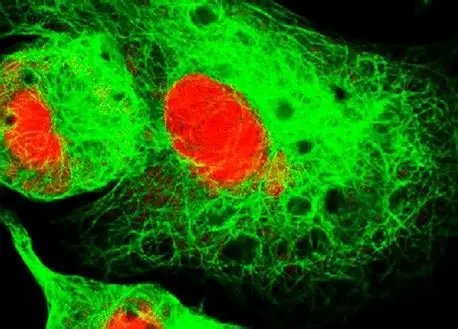Eflornithine Added to Australia’s PBS for Children with High-Risk Neuroblastoma
04 August 2025 | Monday | News

Image Source : Public Domain
- Eflornithine is now reimbursed by the government under Australia's Pharmaceutical Benefits Scheme (PBS). The Pharmaceutical Benefits Advisory Committee (PBAC) recommended the listing of eflornithine for post-maintenance treatment to prevent relapse in patients with high-risk neuroblastoma (HRNB) who are in remission after receiving multiagent, multimodality therapy.
- Approximately 50 children in Australia are diagnosed with neuroblastoma each year, with nearly half classified as having high-risk neuroblastoma (HRNB).
- These children are, on average, just 2 years old, and the average survival rate for those with HRNB is 50%.
Norgine, announced the inclusion of IFINWIL® (eflornithine) on Australia's Pharmaceutical Benefits Scheme (PBS). This listing comes just 3 months after receiving registration by the Therapeutic Goods Administration (TGA) and represents a pivotal step in improving access to essential treatments for patients with high-risk neuroblastoma (HRNB) who are in remission after receiving multiagent, multimodality therapy.
Lucy Jones, CEO Neuroblastoma Australia, welcomed the news: "On behalf of all families of children impacted by neuroblastoma, we welcome the PBS listing of IFINWIL®. We urgently need treatments for children diagnosed with neuroblastoma and this listing ensures every child in Australia has equal access to a new therapy for this aggressive and complex cancer. Providing options to new treatments is critical in ensuring every child diagnosed has the best chance of survival."
"We thank the Federal Government for their support in ensuring early access to this treatment prior to TGA approval and PBS listing, which enabled children with high-risk disease to access the treatment within a time critical treatment window. We look forward to continued support for children with aggressive cancers."
HRNB is a rare but aggressive form of cancer, predominantly affecting children and most commonly presenting in the first 5 years of life.2 Each year in Australia, approximately 50 children are diagnosed with neuroblastoma, with about half of these cases being classified as high-risk neuroblastoma.3 Neuroblastoma originates in the body's nerve cells (neuroblasts) and typically presents as a primary tumour in the adrenal glands.4 It is considered an aggressive tumour because it often spreads to other parts of the body (metastasises). In most cases, it has spread by the time it is diagnosed.4
"Eflornithine (DFMO) is a new treatment for high-risk neuroblastoma, an aggressive cancer seen mainly in infants and young children, said Dr. Toby Trahair, Paediatric Oncologist at the Sydney Children's Hospital. Having access to eflornithine (DFMO) provides clinicians with a much-needed therapeutic option. It's great to see that this new oral medication will be available to all Australian families through the PBS."
"The PBS listing of eflornithine is a landmark moment for families affected by high-risk neuroblastoma in Australia," said Gus Rudolph, General Manager, Australia at Norgine. "This decision reflects the growing recognition of the urgent need for new treatment options in paediatric oncology. High-risk neuroblastoma has limited therapeutic pathways and eflornithine offers a new approach. We are grateful to the Australian Government for providing clinicians with access to this innovative therapy and remain committed to advancing solutions in areas of high unmet medical need."
Please refer to the IFINWIL® Consumer Medicines Information (CMI) for full safety information on risks, side effects and precautions including the risk of low red blood cells (anaemia), low neutrophils (blood cells that fight infection), low platelets (clotting cells), increase in liver enzymes, and hearing loss or problems balancing.
Parents should speak to their doctor for guidance on the best treatment approach for their child.
Most Read
- How Health Systems Are Reshaping Drug Adoption, Partner Models, and Market Access in 2026
- Top 25 Biotech Innovations Redefining Health And Planet In 2025
- The New AI Gold Rush: Western Pharma’s Billion-Dollar Bet on Chinese Biotech
- Top 25 Biotech & Biopharma Leaders in Sustainable Innovation, 2025
- China’s Biopharma Dealmaking Surges in H1 2025, Driven by Record Licensing and Oncology Focus
- Chikungunya in China: How a “Forgotten” Arbovirus Found the Perfect Storm
- How Innovation Gaps in Biopharma Raise New Safety Concerns
- Smart Implants and the Future of Musculoskeletal Injury Treatment
- How Ethical Gaps in Psychiatry Could Undermine Biopharma Progress
- The Evolving Landscape of Women’s Health Innovation in the Asia-Pacific
- Using NLP-Driven Decision Support in Emergency Health Assistance
- Taiwan Steps Into the Global Spotlight With a New Cancer Therapy
- The Role of Unique Device Identification (UDI) in Tracing Medical Device Safety
- The Importance of a Patient’s Mental Health During Clinical Trials
Bio Jobs
- The State of Biotech and Life Science Jobs in Asia Pacific – 2025
- Avantor’s New CEO Ligner Aims to Unlock Global Potential and Deliver Shareholder Value
- AstraZeneca Commits $50 Billion to U.S. Expansion by 2030 in Biggest-Ever Global Investment
- Thermo Fisher, SAMRC, and South Africa’s Department of Science and Innovation Launch CATIR to Nurture Next-Gen Scientists
- Cube Biotech Appoints Former Sartorius CEO Dr. Joachim Kreuzburg to Board of Directors
- FDA’s AI Transition Marks a Turning Point in Drug Review: Industry Faces Pressure to Adapt Amid 20% Workforce Cut
- WuXi XDC Completes Mechanical Build of Singapore Bioconjugate Manufacturing Hub
News
Editor Picks











